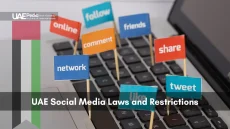In a nation where over 88% of professionals hail from outside its borders, every office becomes a microcosm of global traditions. This vibrant mix fuels innovation—but also creates unique friction points between communication styles, decision-making habits, and unspoken workplace norms.
Navigating these differences isn’t just about avoiding misunderstandings. It’s about building bridges where a delayed email reply might signal respect, not disregard, and where leadership approaches range from hierarchical to collaborative. For managers and HR teams, these dynamics require more than rulebooks—they demand cultural agility.
This guide shares practical strategies used by Dubai’s top employers to turn potential clashes into collaboration gold. You’ll discover how blending local traditions with international diversity creates workplaces where everyone’s voice shapes success. We’ll explore everything from rethinking feedback styles to designing training that celebrates varied perspectives.
In the UAE’s predominantly expatriate workforce, cultural diversity introduces specific conflict vectors—varying email response norms, contrasting feedback styles and divergent leadership expectations. Effective resolution requires calibrated communication protocols that account for power-distance differentials and high-context versus low-context interaction patterns. Organizations must integrate regional labor law mandates with adaptive frameworks that respect both local traditions and international practices.
Practical strategies include structured feedback models (e.g., Compliment-Critique-Commit), proactive policy alignment for global holidays and prayer accommodations, and role-play–based training to simulate cross-cultural scenarios. Technical measures encompass multilingual dashboards to monitor engagement metrics, AI-driven flagging of ambiguous terminology, and anonymous reporting channels. These components form a cohesive cultural agility system that transforms potential friction into collaborative performance.
- Why blending 200+ nationalities in offices requires proactive communication frameworks
- How subtle culture gaps impact team engagement and problem-solving
- Actionable steps to align company policies with regional expectations
- Real-world examples of resolving disputes while honoring all parties
Understanding the UAE’s Multicultural Landscape
Imagine stepping into an office where morning greetings echo in a dozen languages before the coffee machine finishes brewing. This isn’t a UN meeting—it’s Tuesday in Dubai. Teams here blend South Asian formality, Arabic hospitality, Western directness, and countless other flavors into a spice rack of traditions. One team member might see delayed responses as polite hesitation, while another interprets them as disinterest.
The Invisible Rules of Global Collaboration
Feedback styles reveal these contrasts sharply. While some cultures layer critiques between compliments like baklava pastry, others serve opinions straight—no sugar coating. Leadership expectations vary too: hierarchical structures feel natural to some, while flat teams spark creativity for others. “It’s not about right or wrong,” notes a PeopleHum study, “but mapping where these invisible lines intersect.”
When Law Meets Lunchroom Chats
Recent labor law updates now require employers to ensure equal opportunities across all nationalities—a game-changer for inclusivity. But legal compliance is just the baseline. Smart HR teams craft policies that honor unspoken norms: flexible holiday calendars covering Diwali and Eid alike, or training sessions explaining why some colleagues avoid eye contact during feedback.
Consider the manager who confused a Filipino employee’s respectful silence with agreement—only to discover dissent later. Proactive communication frameworks prevent such slips. By treating diversity as the workforce’s superpower—not a hurdle—companies transform potential friction into sparks of innovation.
Read More:
The Essence of UAE Workplace Conflict Resolution Cultural Strategies
Picture a brainstorming session where one colleague’s enthusiastic “Let’s pivot!” sounds like recklessness to another. These moments reveal how cultural lenses shape our interpretations. Hofstede’s research shows Gulf regions score high on power distance—valuing hierarchy—while Western teams often prefer flat structures. This clash isn’t personal; it’s perceptual.
When Silence Speaks Louder Than Words
Avoiding eye contact might signal respect in some Asian cultures but read as evasiveness elsewhere. Similarly, a German employee’s direct critique could unsettle an Emirati manager expecting layered feedback. These gaps ripple through teams:
| Communication Style | Common Misinterpretation | Impact |
|---|---|---|
| Indirect suggestions | Lack of commitment | Delayed projects |
| Formal hierarchy adherence | Resistance to innovation | Stifled creativity |
| Public disagreement avoidance | Unspoken dissent | Low trust |
Building Bridges with Curiosity
Forward-thinking companies use training that’s more role-play than lecture. One Dubai firm reduced email conflicts by 40% after workshops where staff reenacted scenarios using different communication styles. Tips for better dialogue:
- Use “What if?” questions instead of blunt directives
- Pair direct and indirect communicators for peer coaching
- Create anonymous feedback channels for cautious team members
As shown in performance management strategies, blending structure with flexibility helps diverse groups thrive. Monthly “culture swap” lunches and translated policy guides foster the respect that turns friction into creative fuel.
Establishing Effective Communication Strategies
Picture a team meeting where a flowchart sparks faster consensus than a 10-slide deck. In diverse offices, clarity isn’t just nice—it’s necessary. Forward-thinking organizations now treat language as both bridge and blueprint, crafting systems that turn chatter into action.
Language Barriers and Feedback Techniques
One Dubai tech firm slashed email confusion by 60% using color-coded priority labels (red = urgent, green = info). They paired this with “jargon-free Fridays”—simple terms only. “When staff grasp instructions instantly,” shares a PeopleHum case study, “productivity becomes everyone’s first language.”
Feedback dances differ too. For indirect communicators, try the “Compliment-Critique-Commit” method:
- Start with strengths: “Your report’s visuals made data pop.”
- Suggest tweaks: “Adding regional sales comparisons could strengthen page 3.”
- End with support: “Let’s workshop this Thursday—your call on snacks!”
Best Practices for Cross-Cultural Engagement
Leaders set the rhythm. A multinational bank’s Dubai branch uses emoji-free weekly video updates—3 minutes max. Why? Some teams found winky faces unprofessional; others missed vocal cues. Now, managers share key points verbally and in a shared doc.
Handbooks need local flavor too. One hospitality group’s manual uses:
| Section | Global Term | Local Adaptation |
|---|---|---|
| Punctuality | “On time” | “Arrive by 8:45 AM for 9 AM meetings” |
| Feedback | “Be honest” | “Share suggestions via form or 1:1 chat” |
By treating diversity as the ink that writes success stories, teams transform communication gaps into connection maps. The result? Fewer misunderstandings, more “Ah-ha!” moments.
Implementing Inclusive HR Policies and Training
Imagine HR teams juggling holiday requests from Diwali to Eid while redesigning feedback systems for 20+ communication styles. This isn’t hypothetical—it’s Tuesday for progressive organizations. Forward-thinking companies now bake diversity into their policy blueprints, creating frameworks as varied as their staff’s lunchboxes.
Policy Tweaks That Speak Every Language
PeopleHum’s research shows companies offering floating holidays see 31% fewer time-off conflicts. One logistics firm slashed Ramadan scheduling headaches by letting night-shift workers adjust hours—productivity jumped 18%. Smart adaptations include:
- Floating holidays covering major global festivals
- Flexible prayer-time accommodations
- Dress codes respecting cultural modesty norms
Training That Feels Like Global Coffee Chats
Role-playing games trump lectures. A Dubai tech company’s “Culture Quest” workshops pair colleagues to solve fictional office crises using each other’s communication styles. Results? 67% fewer misunderstandings in six months. Key strategies:
- Language cafés where staff teach basic greetings
- Peer coaching between direct/indirect communicators
- VR simulations of cross-cultural client meetings
“When policies mirror your team’s reality, engagement becomes effortless,”
Reviewing HR practices? Start here:
- Audit existing policies through cultural lenses
- Co-create solutions with employee focus groups
- Test adaptations in pilot departments first
These steps transform handbooks from rulebooks to cultural bridges. The payoff? Teams where everyone’s traditions fuel innovation, not friction.
Leveraging Technology for Cultural Management
Think of HR dashboards lighting up like a Dubai skyline—each blinking metric revealing team dynamics across continents. Modern tools now decode what watercooler chats can’t: sentiment trends, collaboration patterns, and unseen friction points. This isn’t Big Brother—it’s bridge-building through bytes.
Utilizing HR Tools to Monitor Employee Engagement
PeopleHum’s multilingual dashboards let managers spot engagement dips before they ripple. One logistics company reduced meeting conflicts by 45% using real-time mood analytics. Features like these shine:
- Customizable holiday calendars honoring 30+ festivals (like those in UAE corporate policies)
- Automated nudges reminding teams to check cross-cultural guides
- Performance heatmaps showing which projects spark joy—or jetlag
Digital Solutions for Resolving Cultural Conflicts
When misunderstandings flare, smart platforms suggest fixes faster than you can say “shukran.” A retail chain cut email disputes by 52% using AI that flags phrases like “urgent” or “ASAP” for indirect communicators. Key wins:
- Translation plugins explaining policy updates in 12 languages
- VR conflict simulations where staff practice tense talks safely
- Anonymous reporting channels with culture-sensitive response templates
Data Insights for Making Informed HR Decisions
“Numbers don’t lie—but they need interpreters,” notes a PeopleHum case study. One tech firm boosted retention by matching mentorship pairs through algorithm-crunched diversity scores. Their secret? Data revealing:
- Which teams crave more face time vs. async chats
- How recognition preferences vary by region (public shoutouts vs. private notes)
- Optimal meeting times spanning Mumbai mornings to Vancouver nights
By letting tech handle the heavy lifting, HR teams focus on what humans do best—turning insights into inclusive action.
Crafting a Harmonious Conflict Resolution Strategy
Ever watched colleagues from three continents debate a project timeline? What sounds like healthy debate to some might feel like chaos to others. Resolving these moments requires more than rulebooks—it demands a playbook that honors varied perspectives while steering toward solutions.
Step-by-Step Techniques for Resolving Workplace Conflicts
Start with private 1:1 chats. A Dubai logistics firm found 73% of disputes dissolve when managers listen first. Next, host mediated group talks using “I feel” statements instead of blame. PeopleHum’s 2023 study shows this cuts tension by 40%.
Key phases:
- Private airing: Let each employee share concerns confidentially
- Structured dialogue: Use timers to ensure equal speaking time
- Solution co-creation: Ask teams to draft three compromise options
- Follow-up checks: Schedule two progress reviews within 30 days
Adapting Resolution Methods to Cultural Contexts
Silence isn’t stubbornness—it’s strategy. When mediating between a Japanese designer and American marketer, one tech leader rephrased questions: “What would make this idea stronger?” instead of “Why disagree?” The shift unlocked solutions hidden in hesitation.
| Scenario | Direct Approach | Adapted Technique |
|---|---|---|
| Public disagreement | Call out in meeting | Suggest written feedback post-session |
| Hierarchy clashes | Force consensus | Assign rotating decision leads |
“Mediation isn’t about winners—it’s about translators who decode intent across cultural dialects.”
Final tip: Document resolved disputes as culture playbooks. One firm’s “Bridge Log” helped new managers avoid repeating past missteps. When teams see their growth reflected in policy, trust becomes the default—not the exception.
Closing Thoughts on Building a Resilient Multicultural Workplace
Consider the unexpected harmony of a lunchroom where biryani shares table space with shawarma—this is where true collaboration begins. Managing a blended workforce isn’t about eliminating differences but orchestrating them into something greater. PeopleHum’s research reveals teams embracing change see 22% faster innovation cycles and 35% higher retention.
Three truths emerge: First, open-minded leadership turns fear of the unknown into curiosity. Second, policies honoring diverse experiences—like flexible schedules matching global holidays—build trust. Third, every adjustment to communication styles or decision-making rhythms strengthens a company’s reputation as an inclusive pioneer.
Start small. Audit meeting structures using insights from the UAE’s historical legal frameworks that balanced tradition with progress. Pair direct and indirect communicators for peer mentoring. Track engagement through pulse surveys.
The future belongs to companies viewing their multinational population not as a challenge to solve, but as a mosaic to refine. Ready to begin? Explore tools like PeopleHum’s demo platform, then share your first “culture hack” at tomorrow’s standup. After all, every thriving team is just one brave conversation away from greatness.
With over 200 nationalities working side by side, differing communication styles, hierarchy expectations, and decision-making approaches can spark misunderstandings. Proactive training on Emirati business etiquette—like the importance of building trust in a majlis-style setting—helps teams navigate disagreements respectfully while honoring local norms.
Policies must balance UAE labor laws with cultural sensitivity. For example, dress codes might accommodate religious attire, while flexible holiday schedules respect diverse celebrations. Regular audits ensure fairness, and inclusive grievance procedures—available in multiple languages—build trust across all employee groups.
Absolutely! Tools like real-time translation apps reduce language barriers during virtual meetings. Pulse surveys track morale across demographics, while AI-driven platforms flag potential conflicts by analyzing communication patterns. Data insights then guide tailored training—like workshops on giving feedback in high-context vs. low-context cultures.
In cultures where saving face is prioritized, open confrontation can backfire. Train managers to read non-verbal cues and use “I” statements to encourage dialogue. Mediation sessions led by bilingual facilitators often work better than formal hearings, allowing parties to express concerns without fear of public embarrassment.
Start with team-building activities that celebrate diversity—like shared Iftar meals during Ramadan or Diwali storytelling circles. These organic interactions foster empathy and dismantle stereotypes. Pairing mentorship buddies from different backgrounds also sparks daily learning, turning cultural awareness into a lived experience, not just a policy checkbox.
Track metrics like reduced turnover in diverse departments, faster conflict resolution times, and improved scores on inclusion surveys. Qualitative feedback—gathered through anonymous channels—reveals whether employees feel heard. Success looks like teams proactively adapting workflows to cultural strengths, like using consensus-building for GCC members or agile brainstorming with global innovators.

















